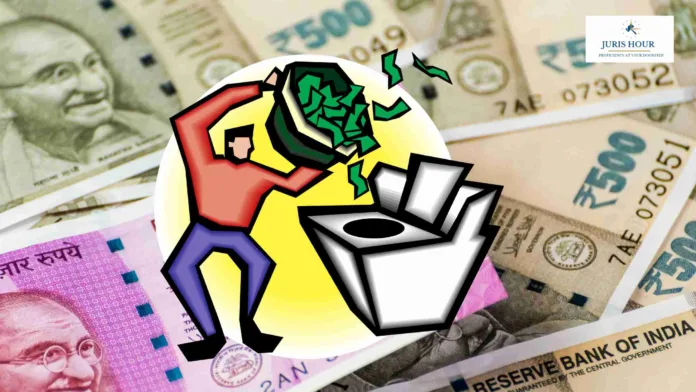Money laundering is not just a financial crime—it is a gateway to funding terrorism, trafficking, and corruption. To address this threat, India has implemented a robust legal framework led by the Prevention of Money Laundering Act (PMLA), 2002, and enforced primarily by the Enforcement Directorate (ED).
What is Money Laundering?
Money laundering involves processing criminal proceeds to mask their illegal origins. It generally takes place in three stages:
- Placement – Introducing illegal money into the financial system.
- Layering – Obscuring the money trail through complex transactions.
- Integration – Reintroducing the “cleaned” money into the economy.
Legal Framework: Prevention of Money Laundering Act (PMLA), 2002
The PMLA was enacted with three main objectives:
- To prevent and control money laundering.
- To confiscate and seize property obtained from laundered money.
- To facilitate international cooperation in anti-money laundering efforts.
Under this law, any person involved in the concealment, possession, acquisition, or use of proceeds of crime, whether directly or indirectly, is guilty of money laundering.
You can read the “Top PMLA Judgements Favouring ED” by CLICKING HERE.
You can read the “Top PMLA Judgements Against ED” by CLICKING HERE.
Role of the Enforcement Directorate (ED)
The Enforcement Directorate (ED) is the primary law enforcement agency tasked with investigating money laundering offenses under the PMLA.
Key Functions of ED:
- Investigates money laundering and foreign exchange violations.
- Attaches and confiscates properties derived from criminal activity.
- Files prosecution complaints in special PMLA courts.
- Collaborates with international agencies under mutual legal assistance treaties.
Legal Powers:
- Attachment of properties under Section 5 of the PMLA.
- Search and seizure of documents, cash, and assets under Section 17 and 18.
- Arrest powers under Section 19.
- Filing of prosecution in special courts designated under Section 43 of PMLA.
ED vs Other Investigative Agencies
| Agency | Primary Role | Governing Law | Jurisdiction | Focus Area |
| Enforcement Directorate (ED) | Investigates money laundering and FEMA violations | PMLA, 2002 & FEMA, 1999 | National (can operate internationally under MLATs) | Economic offenses, cross-border financial crimes |
| Central Bureau of Investigation (CBI) | Investigates corruption, fraud, and high-profile crimes | Delhi Special Police Establishment Act, 1946 | Requires state consent for cases | Corruption, serious fraud, public sector crimes |
| Income Tax Department | Investigates tax evasion and black money | Income Tax Act, 1961 | National | Tax fraud, unaccounted assets |
| Financial Intelligence Unit – India (FIU-IND) | Collects and analyzes suspicious transaction reports | PMLA, 2002 | Intelligence only (no arrest or raid powers) | Receives data from banks and institutions |
| National Investigation Agency (NIA) | Counter-terrorism and related crimes | NIA Act, 2008 | National (suo moto powers for terror-related cases) | Terror funding, cross-border terrorism |
Key Differences:
- ED has both investigative and enforcement powers under the PMLA, unlike FIU-IND which only gathers intelligence.
- CBI often works in tandem with the ED in corruption and fraud cases but does not have powers to act under the PMLA.
- Income Tax Department can levy penalties and conduct raids, but it refers laundering cases to ED.
- NIA tackles terrorism and often collaborates with ED in terror financing cases.
Penalties Under PMLA
- Imprisonment: 3 to 7 years; extendable up to 10 years for drug-related crimes.
- Fines: As determined by the court.
- Confiscation: Properties involved in money laundering are subject to seizure.
Challenges and Criticisms
- Low Conviction Rate: As of 2022, fewer than 0.5% of registered PMLA cases led to convictions.
- Allegations of Misuse: Critics argue ED is sometimes used as a political tool due to its wide-ranging powers and low transparency.
- Stringent Bail Conditions: Courts have raised concerns about the reverse burden of proof and harsh bail provisions under the PMLA.
Conclusion
The fight against money laundering in India hinges significantly on the effective functioning of the Enforcement Directorate. While its powers are substantial and essential to cracking down on financial crimes, ensuring transparency, judicial oversight, and safeguards against misuse are crucial. Coordination with other investigative agencies remains key to a holistic and just enforcement ecosystem.

